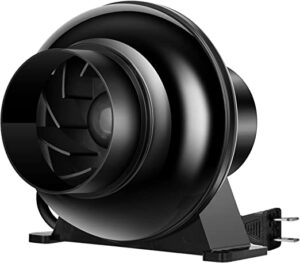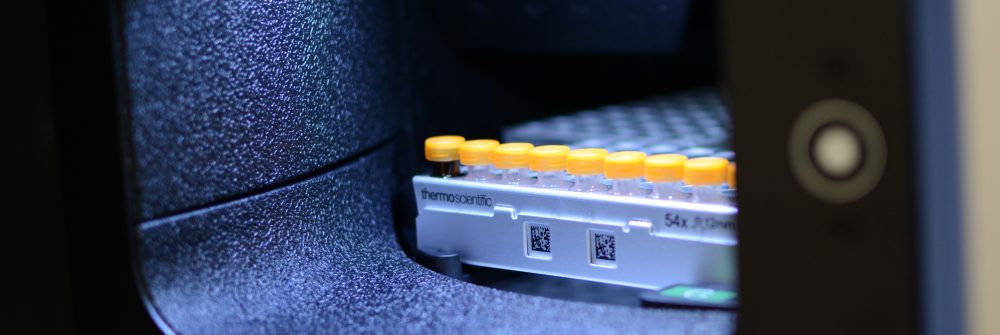Low-Cost Dual Display for the Nanospray Flex Source
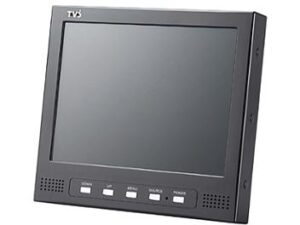 When we acquired the Q Exactive HF-X in 2017 the Nanospray Flex source came with two RCA DinoLite cameras and this 8 inch LCD display. Unfortunately the display is quite heavy and there is no good place to put it without it falling off the IonBench. Additionally being able to view the nanospray emitter from only one angle at a time with this display is inconvenient. Thermo has since switched to USB cameras that go directly to the instrument PC.
When we acquired the Q Exactive HF-X in 2017 the Nanospray Flex source came with two RCA DinoLite cameras and this 8 inch LCD display. Unfortunately the display is quite heavy and there is no good place to put it without it falling off the IonBench. Additionally being able to view the nanospray emitter from only one angle at a time with this display is inconvenient. Thermo has since switched to USB cameras that go directly to the instrument PC.
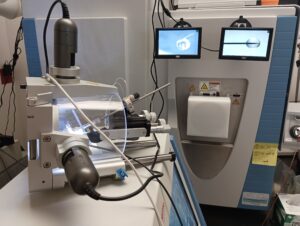 As a replacement we purchased two 5 inch LCD displays from Amazon for $24 each. These are intended for use with car backup cameras and come with suction cups that stick to the front instrument panel very well and allow an unencumbered view of the emitter from multiple angles. They have RCA video and barrel connector power inputs. Note that while the barrel jacks are the same as those used on the DinoLite cameras these displays use 12 instead of 5 volt power and thus care should be taken to not confuse the two. Plans for a 3D printed housing with an integrated buck converter will be released in the future that will improve cable management and allow the use of a single 12 volt power supply
As a replacement we purchased two 5 inch LCD displays from Amazon for $24 each. These are intended for use with car backup cameras and come with suction cups that stick to the front instrument panel very well and allow an unencumbered view of the emitter from multiple angles. They have RCA video and barrel connector power inputs. Note that while the barrel jacks are the same as those used on the DinoLite cameras these displays use 12 instead of 5 volt power and thus care should be taken to not confuse the two. Plans for a 3D printed housing with an integrated buck converter will be released in the future that will improve cable management and allow the use of a single 12 volt power supply
Improved ionBench Cooling system
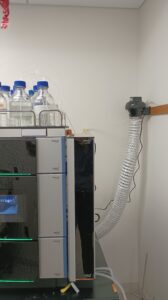 The Q Exactive HF-X has two rough pumps housed in an ionBench. The smaller Duo 11 pump runs hot with a surface temperature approaching 75 C. We experienced occasional turbomolecular pump failures that were traced to the rough pump overheating and shutting down. These failures are potentially harmful to the instrument and overheating can reduce rough pump lifespan and performance. The ion bench features two axial 120 mm exhaust fans that likely produce 60-100 CFM of air flow each (specifications are difficult to find). To reduce pump shutdowns we purchased a 4 inch duct fan commonly used as ventilation for hydroponic gardening and a 120 mm flange adapter. The bottom 120 mm exhaust fan was replaced with the duct fan configured as an intake.
The Q Exactive HF-X has two rough pumps housed in an ionBench. The smaller Duo 11 pump runs hot with a surface temperature approaching 75 C. We experienced occasional turbomolecular pump failures that were traced to the rough pump overheating and shutting down. These failures are potentially harmful to the instrument and overheating can reduce rough pump lifespan and performance. The ion bench features two axial 120 mm exhaust fans that likely produce 60-100 CFM of air flow each (specifications are difficult to find). To reduce pump shutdowns we purchased a 4 inch duct fan commonly used as ventilation for hydroponic gardening and a 120 mm flange adapter. The bottom 120 mm exhaust fan was replaced with the duct fan configured as an intake.
This duct fan generates both higher flow and higher pressure than the stock axial fans, the latter of which is helpful in ensuring air travels around to the front of the pump compartment for efficient cooling. We have not experienced further pump failures following this $50 modification.

